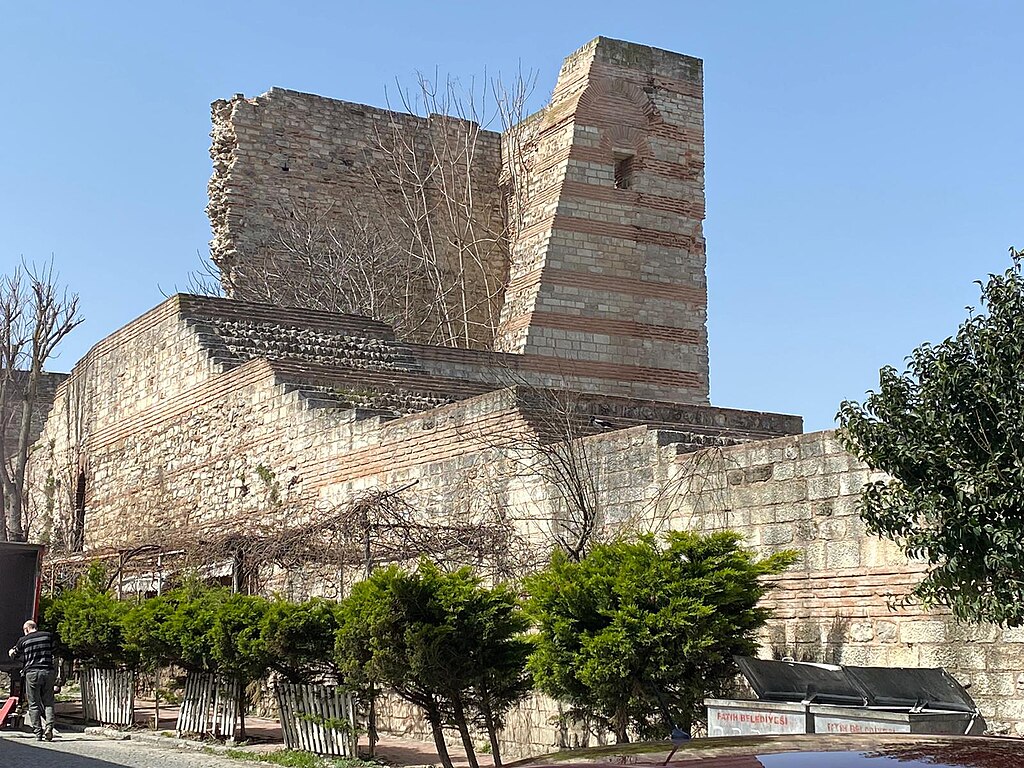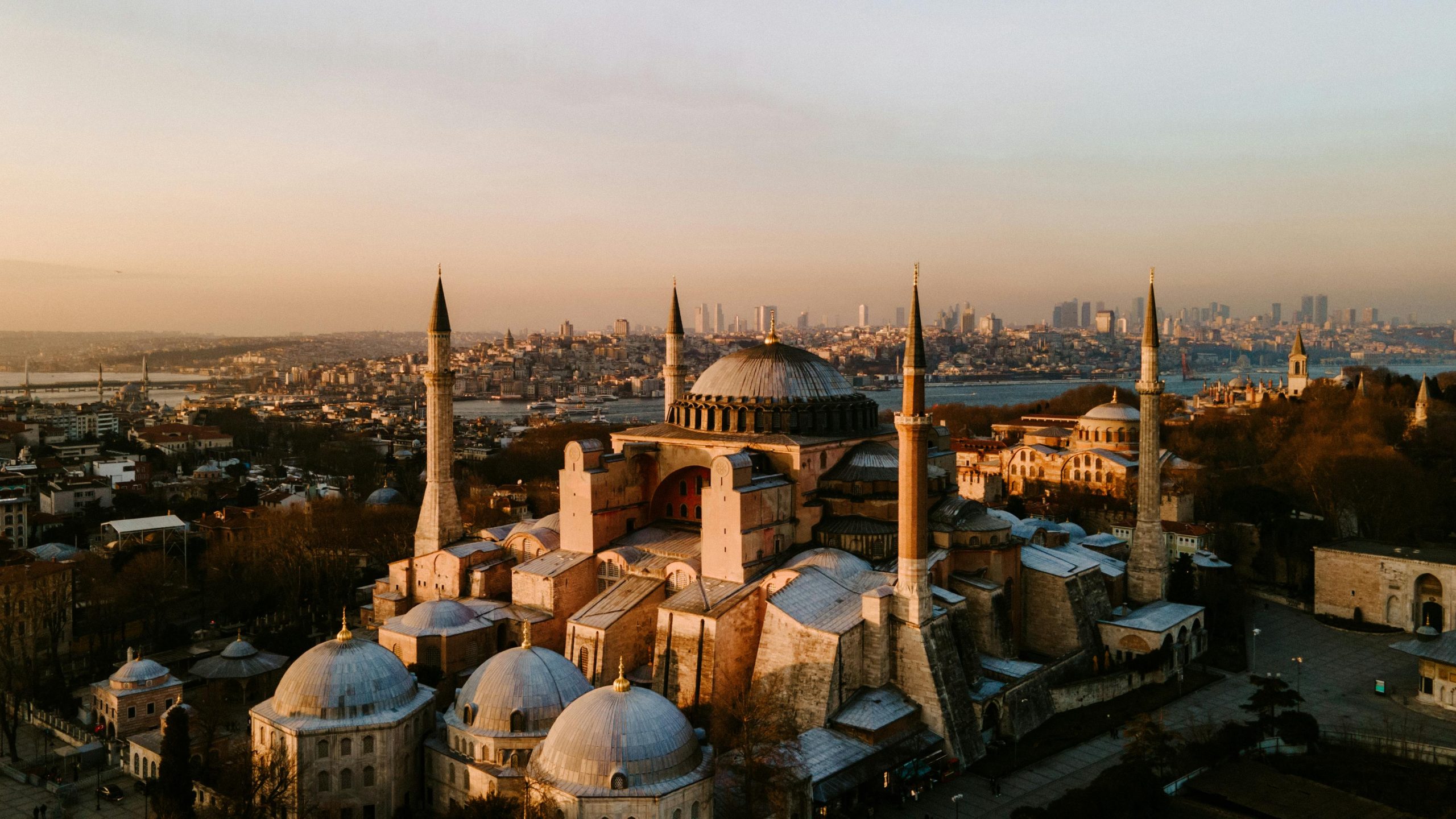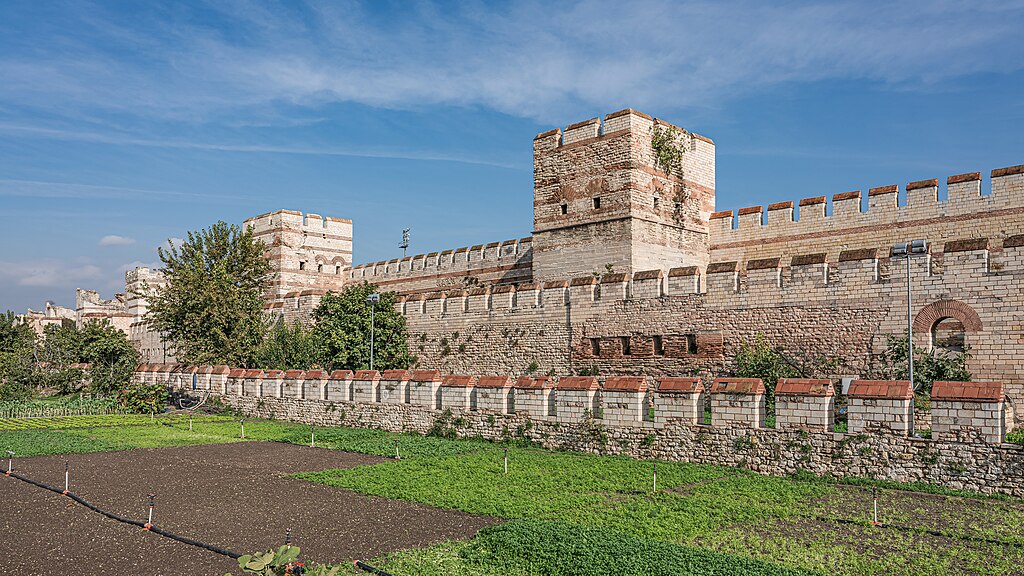Palace of Blachernae, Istanbul
Palace and Roman Site in Istanbul

Hidden away in the quiet Ayvansaray quarter near the ancient Theodosian Walls lies one of Istanbul's most fascinating yet overlooked sites — the Palace of Blachernae. Though little remains above ground today, this once-glorious complex was the final imperial residence of the Byzantine emperors, standing proudly at the edge of the city before the fall of Constantinople in 1453. For lovers of history, this spot is one of the best places to see in Istanbul, offering a glimpse into the city's forgotten imperial grandeur.
The Blachernae district, perched on the northern slopes of the Sixth Hill, was where emperors retreated from the bustling Great Palace to a quieter and more fortified setting. Walking the nearby streets today, you can still sense the weight of history — from the old walls that once guarded the palace to the nearby Church of St. Mary of Blachernae, a sacred site associated with the Virgin's miraculous icon. The area is a highlight of any walking tour of Istanbul's ancient walls that ventures beyond Sultanahmet, inviting travelers to imagine the splendor that once stood here amid marble terraces and royal halls.
Table of Contents
History and Significance of the Palace of Blachernae
The Palace of Blachernae was built around the year 500 AD, during the late Roman period, on the slopes of Istanbul's Sixth Hill. Initially, it served as a suburban retreat for the Byzantine elite, but by the 11th century, Emperor Alexios I Komnenos made it his primary residence, shifting the empire's political center from the Great Palace near the Hippodrome to this more defensible location near the city walls. His successors, including Emperor Manuel I Komnenos, expanded and fortified the palace, adding splendid new halls, terraces, and an outer wall to protect the royal complex.
By the 12th century, the Blachernae complex was known as the “New Palace”, distinguished by its lavish ceremonial halls — the Hall of Irene, the Polytimos Oikos (“Precious Hall”), and the Danoubios Hall — which were adorned with mosaics, marble, and gilded furnishings. It was here that Emperor Manuel I famously received King Louis VII of France and Queen Eleanor of Aquitaine during the Second Crusade, a moment of great imperial pageantry.
After the Latin conquest of 1204, the palace fell into disrepair but was revived once more under the Palaiologan dynasty, who restored it as their residence upon reclaiming Constantinople in 1261. Sadly, after the Ottoman conquest of 1453, the palace was looted and gradually destroyed. Today, only fragments survive, but one connected structure — the nearby Palace of the Porphyrogenitus (Tekfur Sarayı) — remains as the only intact example of Byzantine palace architecture in the city.
Things to See and Do in the Palace of Blachernae
While the main palace structures have long since vanished beneath the modern cityscape, exploring the area around Ayvansaray offers a tangible sense of the palace's grandeur. Visitors can still see sections of the Byzantine walls that once enclosed the palace grounds and the remains of the Prison of Anemas, a formidable substructure that was part of the Blachernae complex. This vaulted stone fortress, which doubled as a dungeon, is one of the few surviving physical links to the imperial compound.
A visit to the nearby Church of St. Mary of Blachernae is essential, as the palace was once connected to it via a grand staircase. The church housed one of Byzantium's holiest relics — the robe of the Virgin Mary — and served as a spiritual refuge for the emperors. You can also visit the Palace of the Porphyrogenitus, a later Byzantine structure associated with Blachernae, notable for its elegant brickwork and arched loggias.
The neighborhood itself rewards exploration, with its narrow lanes, Ottoman-era houses, and tranquil setting along the Golden Horn. History enthusiasts and photographers alike will find this one of the top sights in Istanbul for uncovering the layers of the city's imperial past in an off-the-beaten-path location.
How to Get There
The Palace of Blachernae site lies in the Ayvansaray district, within the Fatih area of Istanbul, near the ancient Theodosian Walls. From Sultanahmet, you can take the T1 tram to Eminönü, then transfer to a bus heading toward Ayvansaray or Eyüp. Visitors arriving by train can connect via Sirkeci railway station and take a taxi or bus to the site. You can use the official TCDD Taşımacılık website to check schedules, compare routes, and purchase tickets for Turkey's national and regional trains operated by TCDD. For a more streamlined experience (especially if you prefer an English interface or want to compare across countries), we recommend using Omio, which allows you to easily compare prices, schedules, and book train tickets across Turkey and the rest of Europe — all in one place. Street parking is limited but available near the Golden Horn waterfront. If you are looking to rent a car in Turkey I recommend having a look at Discover Cars, first, as they compare prices and review multiple car rental agencies for you.
Practical Tips on Visiting the Palace of Blachernae
- Best time to visit the Palace of Blachernae: Early morning or late afternoon for quiet exploration and soft lighting.
- Entrance fee in Euros: Free (open public area).
- Opening hours: Accessible at all times, though best visited during daylight.
- Official website: https://muze.gov.tr
- How long to spend: 30 minutes to 1 hour, longer if visiting nearby churches and ruins.
- Accessibility: Some uneven ground; comfortable shoes recommended.
- Facilities: Limited; nearby cafés and restrooms in Ayvansaray.
- Photography tip: Capture the ruins and walls at golden hour for the best contrast and texture.
- Guided tours: Available as part of Byzantine-themed private tours.
- Nearby food options: Traditional local eateries along the Golden Horn and in the Balat district.
Is the Palace of Blachernae worth visiting?
Yes, especially for those fascinated by Byzantine history. While little of the palace remains, the site's significance as the last residence of the Byzantine emperors and its atmospheric setting make it one of the things to do in Istanbul for history lovers. It's also a peaceful escape from the more crowded parts of the city, offering a quiet moment among ancient ruins and city walls.
FAQs for Visiting the Palace of Blachernae
Can I enter the palace ruins?
Only certain sections like the Prison of Anemas and nearby walls are accessible.
Is there much left to see?
Most of the palace is gone, but the area retains strong historical interest.
Are there guided tours?
Yes, several Byzantine walking tours include Blachernae and nearby sites.
Is it safe to walk around the area?
Yes, but stick to main paths and daylight hours.
Is there a connection to other Byzantine palaces?
Yes, the Palace of the Porphyrogenitus nearby is part of the same complex.
Nearby Attractions to the Palace of Blachernae
- Church of St. Mary of Blachernae – Once the city's most sacred shrine, famed for its relic of the Virgin's robe.
- Palace of the Porphyrogenitus (Tekfur Sarayı) – A rare surviving Byzantine palace with restored brickwork.
- Theodosian Walls – Imposing 5th-century city defenses offering atmospheric walks.
- Fethiye Mosque – A converted Byzantine church with striking frescoes and mosaics.
- Balat District – A colorful, historic neighborhood filled with traditional houses and cafés.
The Palace of Blachernae appears in our Complete Guide to Visiting Istanbul!
This website uses affiliate links which may earn a commission at no additional cost to you!
Visiting Palace of Blachernae
Nearby Attractions
- Palace of the Porphyrogenitus (0.0) km
Palace in Istanbul - Kaligaria Gate (0.3) km
City Gate in Istanbul - Chora Church (0.3) km
Church in Istanbul - Gate of Charisius (0.3) km
City Gate in Istanbul - Fifth Military Gate (1.6) km
City Gate in Istanbul - Gate of Saint Romanus (1.7) km
City Gate in Istanbul - Panorama 1453 History Museum (2.4) km
Museum in Istanbul - Gate of Rhesios (2.7) km
City Gate in Istanbul - Suleymaniye Mosque (2.8) km
Mosque in Istanbul - Galata Tower (3.0) km
Tower in Istanbul


